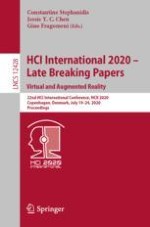2020 | OriginalPaper | Chapter
Desktop and Virtual-Reality Training Under Varying Degrees of Task Difficulty in a Complex Search-and-Shoot Scenario
Authors : Akash K. Rao, Sushil Chandra, Varun Dutt
Published in: HCI International 2020 – Late Breaking Papers: Virtual and Augmented Reality
Publisher: Springer International Publishing
Activate our intelligent search to find suitable subject content or patents.
Select sections of text to find matching patents with Artificial Intelligence. powered by
Select sections of text to find additional relevant content using AI-assisted search. powered by
